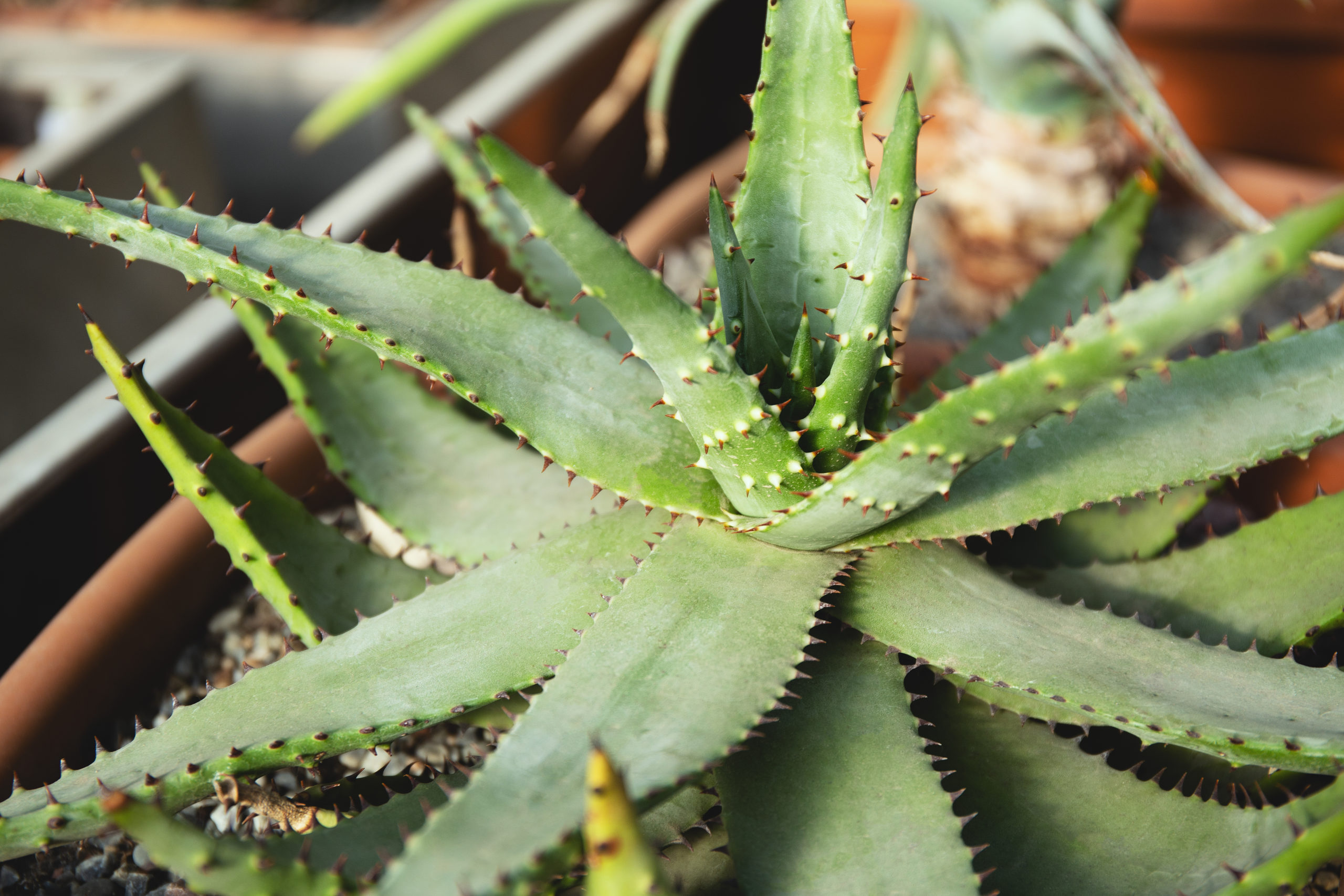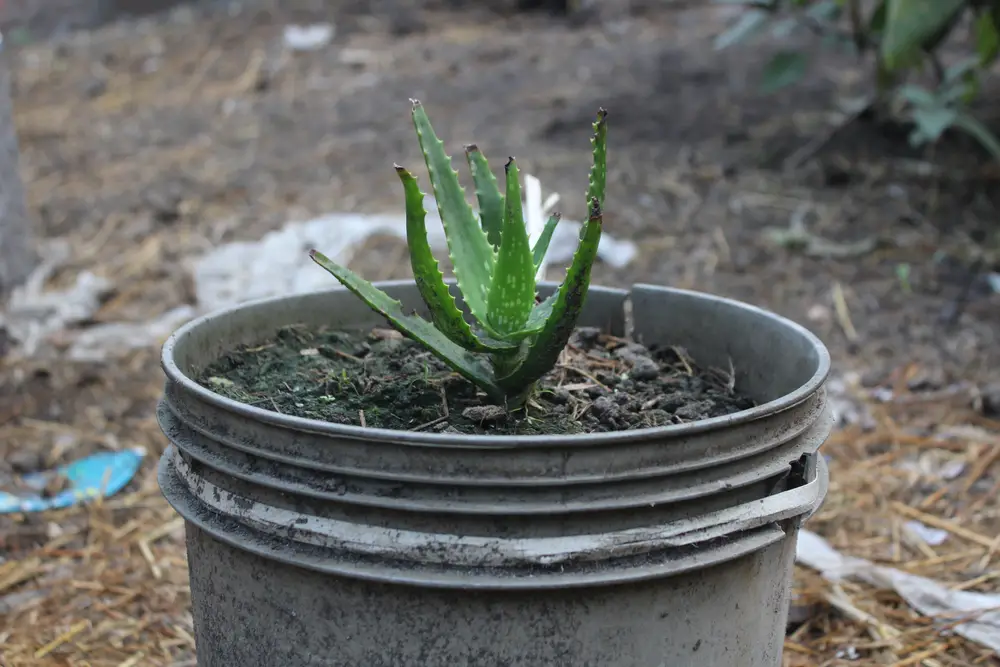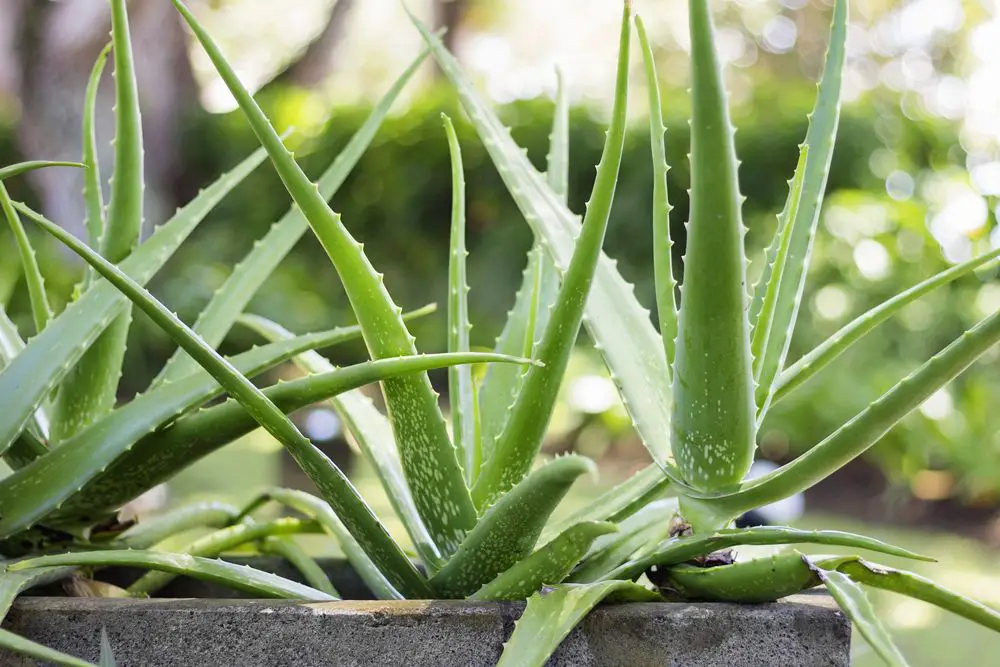Aloe Vera is a great plant. The benefits are countless. Here we tell you how to care for your Aloe Vera plant. The proper way of watering and what it requires to grow, and so on.
Do You Water Your Aloe Plant from the Top or Bottom?
An Aloe Vera plant must always be water from the bottom. It does not need to be watered very often, but the job must be done right when it is time to water it.
We will correctly guide you on how to water an Aloe Vera plant, and why watering it from the bottom is always better than watering it from the top.

An Aloe Vera plant is a very popular succulent because of its beautiful, symmetrical shape.
It makes a great addition to your garden or works well as indoor decoration.
It doesn’t need to be watered very often since it stores plenty of water in its leaves for use in drought. Some plants can absorb water through their leaves, however, Aloe Vera is not one of them.
The very essence of watering your Aloe Vera or any other Aloe species is to do it from the bottom. This plant needs water to reach the soil around its roots, but not its leaves.
The significance of watering the plant starting from the base is that the water may fall directly into the soil and roots. This would help water to reach down the roots easily.
Ideally, watering it from the top is not recommended because the water pools between the plant’s leaves, which will cause root rot.
Sometimes, we ought to think that seeing the plant’s leaves wet indicates that it gets the water it needs, but still is not always the case because the water you pour on top of the plant may not even reach the soil or the roots.
It is always best to pour the water directly into the soil so that the leaves may not get wet.
How To Water Your Aloe Vera Properly?
We all know that Aloe Vera is quite hardy and resilient and has even been named an unkillable plant as it could still come out alive. However, the incorrect watering of this plant will have adverse effects on its optimal growth.
Here Are Some Tips On How To Water Your Aloe Vera Correctly:
- First, you must know when an Aloe Vera needs to be watered. Aloe is succulent, and it likes the soil to dry out completely between watering.
- Check the soil’s moisture level by touching the top two inches of soil in the pot and if the top two inches of soil are dry, water the plant. If the soil is still damp, withhold water.
- When you have established that your Aloe Vera indeed needs water. Then prepare your watering can. Fill it with filtered water or rainwater if available.
- However, if the only water available is tap water, fill a large container with water and leave it uncovered for a day to dissipate the chlorine.
If you are using tap water directly to the plant, it could cause a build-up of minerals and chemicals in the soil that can damage the roots.
- During watering, make sure the watering spout can aim directly into the soil. Make it a way that no water should find its way into the center of the plant.
- Water your Aloe more slowly. Keep watering until you can see the excess water flowing out of the drainage holes at the bottom of the pot. When the water is flowing out, that is your sign to stop watering.
- Water your Aloe Vera plant slowly and deeply, allowing the soil to dry out before watering again.
- During winter, growth slows down. Aloe needs even less water than during the rest of the year. It needs water once every three weeks. Remember to mist the leaves occasionally.
- Do not use fertilizer or re-pot until the Aloe has outgrown its pot. Aloe is succulent. It stores water in its leaves while the roots are shallow, allowing the plant to absorb all the moisture it needs.
- Overwatering an Aloe Vera plant, will develop root rot.
- Keep the soil moist but not waterlogged.
How Often Does An Aloe Vera Plant Need To Be Watered?

That said, Aloe can store water in its waxy leaves for use in times of drought. The time frame between waterings would depend on factors such as the current weather conditions, the season, and the climate where you live.
This amazing plant likes to be outdoors during the spring and summer. But, it should be taken indoors during the colder months.
If ever you live in a place with cold winters, your Aloe Vera plant should be placed outdoors in the hot sun. It would need to be watered more often because the sun’s light and the humidity would dry out the soil even faster.
There is no schedule to follow when watering your Aloe Vera plant. But rather touch the soil in the pot to check its moisture levels.
This practice could help you avoid both overwatering and underwatering your Aloe Vera plant.
How Do You Know If An Aloe Vera Plant Is Overwatered?
One of the most common mistakes of Aloe Vera plant lovers is giving too much water to their wonder plant. An important reminder: Aloe is succulent, so it does not need to be watered very often.
Overwatering Could Be Done For Some Reasons:
- By giving the plant more water than it needs whenever you water it.
- Water it more often than it needs.
- Leaving the Aloe Vera plant out in the rain for a long time.
- Using a pot with poor drainage.
Here Are Some Signs That An Aloe Vera Plant Is Overwatered:
- The leaves turn yellow. Whenever the problem is not addressed immediately, it will turn brown and then black. It will also start to droop.
- Another sign of overwatering is edema. It will likely start when the leaves start to swell from all the water the plant has absorbed.
Generally, the roots absorb water as long as they are still in the soil. At the same time, the leaves become edematous, which are soft and mushy to touch.
Once these leaves have become edematous, they are oversaturated and badly damaged.
It takes time for them to recover. Hence, there are still some leaves that do not have edema. Prune the damaged leaves off with a sterile knife.
The appearance and growth of a mold is seen on the top layer of the soil. This mold looks like white flecks on the brown soil and may even resemble cotton. Another type of mold is green in color. The presence of mold in the soil could cause damage to the plant’s roots. Make sure to remove it immediately.
The most serious condition that can stem from improper watering or overwatering of your Aloe Vera plant is root rot.
It develops when the soil in the plant’s pot is constantly waterlogged. The roots are left to stand in wet soil for prolonged periods.
Aloe Vera plant soil needs to dry out between waterings so that the roots could absorb oxygen.
If ever, unable to dry out, the roots would drown and die. The dead roots would start to rot and be susceptible to pathogens such as bacteria and fungi in the soil.
These would likely spread more aggressively to the rest of the plant. Then the leaves would turn dark, soft, and mushy.
This means that the rot has taken over the plant. Too late to save it.
You should instead dispose of it and start over with a new plant.
What is an Aloe Vera?
An Aloe Vera is a popular succulent and wonder plant belonging to the Aloe genus.
An evergreen perennial plant that originated in the Arabian Peninsula but now grows wild in tropical areas worldwide. It is mainly used for houseplants and agricultural and medicinal purposes.
This species is somehow used as an ornamental plant and grown effectively as a potted plant indoors. It could be used and found in various consumer products, such as drinks, skin lotions, cosmetics, and sunburn ointments. Hence, it has been widely used traditionally as a topical medication.
Most likely, a cactus-like plant that substantially grows in hot and dry climates. This kind of species is cultivated in subtropical regions around the world.
This includes the southern border areas of Texas, New Mexico, Arizona, and California. In the traditional past, Aloe Vera is used for skin conditions and was thought to improve baldness. It also promotes wound healing.
Final Thoughts on Do You Water Your Aloe Plant from the Top or Bottom?
Overall, the Aloe Vera plant is surprisingly low-maintenance. It’s ideal for just about any home. The challenge is giving an Aloe Vera plant the right amount of water and making sure to not over or under-water it.
Enjoy Gardening!
Read More:
How to Grow Aloe Vera without Soil

